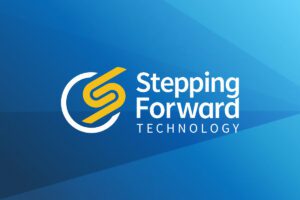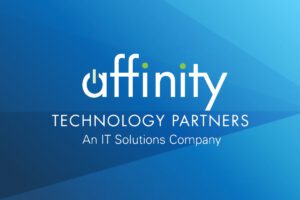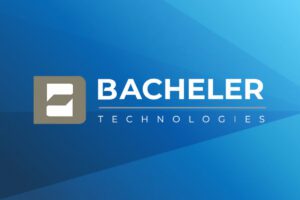
Baroan Technology Replaces StorageCraft and Veeam with KUB by Kaseya
Overview
Baroan Technologies has long been in the backup and recovery services business, using tools from StorageCraft and Veeam — but not without struggles. Neither tool could handle all situations, forcing Baroan to equip some clients with one approach, while others with the second. This meant supporting two imperfect and complex solutions.
About
Baroan Technologies has been providing quality guidance, implementation and IT support services in the technology industry. Proudly serving Bergen County, NJ since 1997.
“With Kaseya Unified Backup, we gain simplicity. We aren’t dealing with multiple vendors to get something recovered or when support is needed. We aren’t putting customer data into two or three organizations’ hands and hoping that they’re not inundated to the point where they have challenges spinning up the recovery.” Glenn BarnasNOC Manager for Baroan Technologies
Challenges
- Simplify management and cost structure for backup and recovery technology
- Improve speed and ability to recover from outages, including disasters
- Reduce complexities of using multiple
Baroan Technologies has long been in the backup and recovery services business, using tools from StorageCraft and Veeam — but not without struggles. Neither tool could handle all situations, forcing Baroan to equip some clients with one approach, while others with the second. This meant supporting two imperfect and complex solutions.
Fortunately, Kaseya, working with the fully-owned business unit Unitrends MSP, developed Kaseya Unified Backup (KUB) – just what Baroan needed. “We looked at the new unified backup from Kaseya and found that it did everything that we needed,” explained Glenn Barnas, NOC manager for Baroan. KUB makes life far easier for all concerned. “It’s a unified platform. We don’t have to manage two products and it seamlessly integrates with VSA,” Barnas said.
Baroan, based in New Jersey, knows disasters well. “A few years ago, Super Storm Sandy hit this area pretty hard. There is a limit to the number of resources we have to help cus-tomers recover. We could do maybe two a day and do several things remotely, but in a dis-aster the scale of Sandy, many customers had to find temporary locations because their buildings were flooded out. We needed to bring them up at a new facility, get them active, and then start the recovery process. Being able to turn the recovery process over to some-body (such as with KUB) allows us to handle more customers within a reasonable amount of time in a disaster like that,” Barnas said.
A big advantage for the busy MSP is the integration of KUB with VSA by Kaseya, which streamlines management, changes, configuration, and alerting. “The challenge we had with StorageCraft is there’s no integration into VSA, which has been our RMM platform for many years. On the other hand, the Veeam interface into VSA did not give us everything we wanted, so we had to use the external Veeam portal for administration and tracking. We had two sets of alerts to deal with, those from StorageCraft, and those from Veeam. We had twice the amount of work to set those up, track them, and determine what to do with them. We’re a highly automated shop, so the fewer things that we have to define remediations for, the easier it is overall,” Barnas said.
The cloud layer was another hassle forcing a workaround. “We have components that take the data off site, whether we were using StorageCraft or Veeam. Then we contract with yet another service provider that can take that data and spin it up virtualized. It is a more com-plex solution involving multiple costs and more parties. With Kaseya Unified Backup, flip a switch or make a call and we are ready to go. It really simplifies the continuity process,” Barnas said.
The build-it-yourself approach with Veeam and StorageCraft was also more expensive than the KUB alternative. “We had multiple parties involved and needed to deal with the costs that they have,” Barnas added. “We have customers around the country [United States], so we’re not always bringing that data back to the East Coast. We work with an organization on the West Coast so we can localize backups. They charge differently, so we need to price things accordingly. It is challenging when you have a customer who is based on the East Coast and has a major office on the West Cost, and they question, ‘Why does it cost more on the West Coast?’ Those are some of the marketing and sales challenges to using a home-brewed solution that you wouldn’t have with a unified platform.”
Restoration Testing
A significant limitation of the on-prem Veeam solution is the lack of built-in capacity to thor-oughly test backups to ensure they can restore properly, which is a standard feature of KUB in contrast. That forced Baroan to do it themselves. “For those customers on Veeam, we do a quarterly or semiannual DR test, where we actually recover to an alternate environment and verify that we can spin it up. There are costs associated with that, but it’s part of the DR planning and services that we offer,” Barnas said.
With KUB, Barnas can simply call and request a DR test, which is done without impacting the customer.
The KUB Ransomware Edge
The KUB appliance is Linux based. Ransomware, meanwhile, primarily attacks Windows systems. Veeam uses many Windows virtual machines that can be infected with ran-somware. The result? Far better ransomware protection with KUB than Veeam.
This ransomware scenario forced Baroan to craft a workaround. “We put the Veeam server in some of the most critical environments on a separate VLAN using a separate backup net-work so you can’t get to the backup infrastructure directly. It is a much more complicated solution. You are talking about a network implementation with multiple VLANs and multiple network adapters dedicated for backup onto the hardware. It is much more challenging to set that up and get it to work correctly to provide that extra layer of protection. With KUB, we don’t have to go to that extreme,” Barnas said.
With both StorageCraft and Veeam, Baroan also had to come up with its own cloud layer. “We work with an organization that has data centers around the eastern and central area of the U.S. They have a virtual infrastructure, and offer storage. They can spin up those virtual images and support a number of different platforms, Veeam, StorageCraft, whatever. It’s an additional cost, and additional complexity and you still have the challenge of having enough bandwidth to get the data off site on a regular basis,” Barnas said.
Solutions
- KUB is an all-in-one BCDR solution – a hardware appliance that provides fast recovery, while the cloud protects all data in case local recovery isn’t possible
- Simple subscription-based pricing
- Powerful combination of VSA and KUB supports sophisticated IT automation, simplifying tasks for the MSP
KUB Migration
Baroan is now migrating many of its clients to KUB. “Most of our customers are on the larger size, 50 to 500 endpoints, and they’re all going to move over to KUB,” Barnas said, noting that as many as 65 percent of its clients will move to KUB.
Explaining the Value of KUB
Baroan serves as the IT department for many of its clients, which trust the MSP with key decisions. Even so, Baroan extolls the value of KUB. “KUB has improved our resistance to malware. It has faster spin-up times. We have offsite backup and assistance to bring you back online to meet your RTO (Recovery Time Objective) and RPO (Recovery Point Objective). It is an extra set of hands that, no matter what happens, no matter what level of disaster affects this area, somebody can help you get back online and bring your business back into operation — even if our office is affected,” Barnas said.
The Downside of Downtime
Downtime is not just an annoyance. It is not just a loss of revenue. Downtime can literally threaten the existence of a business, especially if data is destroyed and cannot be recov-ered. “Anything that brings a customer back online and enables them to continue their operations in a faster manner is important,” Barnas said. “It makes sense to go with KUB. It is much more complete, and a much more integrated product,” Barnas said.
The KUB Pricing Model – Simplicity and Flexibility
With StorageCraft and Veeam, Baroan had two types of pricing for customers. There was an upfront hardware cost and then a service cost on top that for services and the cloud layer. “With Veeam, obviously there’s the local hardware. There’s the licensing for Veeam and then there’s the administration costs — and we bill that per server,” Barnas said.
The KUB pricing model is quite different from the vast majority of alternatives. MSPs find that having that subscription-based model is useful for them and very attractive to clients and customers. KUB has one price, a monthly subscription fee that enables MSPs to deliver a critical service to customers that, in return, generates monthly recurring revenue for the MSP. The pricing model fundamentally changes the economics of offering backup, business continuity and disaster recovery.
“With KUB, we gain simplicity. We aren’t dealing with multiple vendors to get something recovered or when support is needed. We aren’t putting customer data into two or three organizations’ hands and hoping that they’re not inundated to the point where they have challenges spinning up the recovery,” Barnas said.
While KUB is offered at one price to MSPs, MSPs have flexibility in how they price to clients. “Even with this product, we market it on a per-server basis. We’re still providing the hands-on daily service to validate events and backups. [Our price] covers the cost of the appliance and the subscription to the appliance. We have a fair margin for the work that we do,” Barnas explained. “It’s the mechanics that change, not necessarily the pricing. We are simplifying the work we do on the back end. The backup manager now looks in one place for all of this information instead of two or three places. Simplified operation for us is key. When the operation is simplified, we gain more control, and the control gives us the reliability that we look for in supporting the customer environment.”
Making SLAs Feasible
Baroan does not offer backup and recovery service-level agreements (SLAs), but that could well change thanks to KUB. “We don’t currently offer SLAs because we have mixed platforms for some customers. It is hard to come up with a single SLA or even an OLA [operational-level agreement] to cover that much of a difference in environments between the customers. With a single solution like KUB, it’s certainly something we can start looking at,” Barnas said. “That will make a difference, especially in working with the larger customers. Enterprise environments are looking for the RPO. They want to know when the recovered data will be available, and we have targets. Now that we have a solid solution that’s common across the infrastructure, the ability to offer an SLA becomes viable.”
Ultimately for Baroan, KUB is a game changer. The solution is simple to manage, easy to price, offers true BCDR, and fits into the MSP’s desire for recurring revenue.

Nero Consulting: Securing the future through a cybersecurity-first strategy
Read Study
Stepping Forward Technology’s journey from IT provider to trusted partner
Read Study
Affinity Technology Partners goes from grit to growth
Read Study